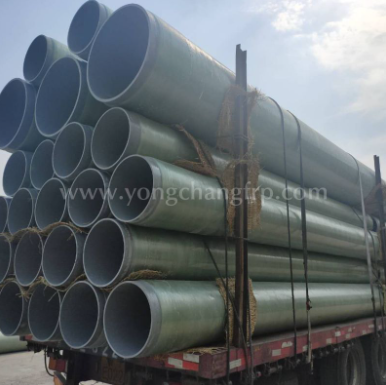Frp Pipes: History, Present And Challenges
Composite materials like FRP or fiber-reinforced plastic are used commonly in manufacturing and construction. As a composite material FRP has many advantages that make it extremely durable, even when exposed to a corrosive environment. It is used in the handling of all kind of materials, including, their storage and transfer.
One of the most commonly seen applications for FRP is FRP pipes. Laid underground, overhead, in seawater as well as factories, FRP pipes find common usage because of their load bearing capacity and resistance to corrosion. Although it is seen as a modern product, the history of FRP is actually quite old, dating back almost 65 years!
History
The first product that can be labeled as an FRP product is Bakelite. It was invented by Leo Baekeland who was actually looking for a replacement for shellac. In 1905 it was while he experimented with formaldehyde and phenol that he stumbled upon various compounds. One of these was hard material that could be moulded. This was Bakelite.
In the 1930spioneers like Norman de Bruyne were actively looking into the development of FRP for commercial use, especially in the aviation industry. The breakthrough came when Games Slayter, a researcher, found a way to mass produce glass strands in1932. This was an accidental result that occurred when he focused a stream of compressed air on molten glass. This resulted in the production of fine fibers.
The same method was later used by Owens Corning to produce ‘fibreglas’. Spelled with a single s, it was a patented product. This was actually glass wool in which fibers trapped gas. In 1936 du Pont found a resin that could combine "fibreglas" with a plastic. While the earlier avatar was a very effective insulator, this new composite showed strength and the potential for a much wider use.
Developments in fiberglass continued extensively in the automobile and aviation industry. Meanwhile, the invention and production of carbon fibers and aramid fibers further advanced the developments with the industry.
But the global scale of FRP we see today came only in mid 20th century when technology brought in new material and enabled mass production. Finally, it was in the 70s that worldwide production of FRP exceeded steel, becoming the mass produced industrial and construction material that we see today.
FRP pipes today
FRP is today used for a number of structures, including handrails, guardrails, ladders and platforms. But one of the most common application is in making FRP pipes. FRP pipes are used to transport all kinds of liquid. Some of the areas where FRP pipes are used are:
• Automobile industry
• Water distribution
• Chemical industry
• Wastewater management
• Construction industry
• Oil exploration and offshore projects
FRP: Issue and concerns
Although FRP pipes have emerged one of the most commonly used applications, its popularity is still hampered by certain issues. Let us explore some of them:
Quality:
Like any industrial material, quality of the parts determines its functionality. Although there are a number of very reliable FRP pipes manufacturers in India, it is still important to check the quality of the pipes. The best way to do so is by checking ISO and ASTM standards. The standards are laid down specifically to ensure that buyers can ascertain the tensile strength and load bearing capacity of a pipe.
Installation:
The functionality of an FRP pipe will eventually depend on its installation. Any loose fittings can result in leakages and eventual collapse of the pipe layout. This also includes the installation of suitable pipes. The selection of a pipe depends load bearing capacity, which can differ from one pipe to another. So, its important to ascertain the pressure of the liquid before one select the pipe.
Price:
FRP as a raw material can be more expensive than some alternatives like steel. However, it is much more economical by a long-term perspective. It is less expensive to install and maintain. It is also far more resistant to corrosion, giving one a better value for money.
Disposal:
One of the major concerns regarding FRP usage is its disposal and recycling. FRP products are usually impossible to break down into its constituent parts. This makes the disposal and recycling of FRP pipes, which has plastic as part of its constituent elements, an environmental hazard.

评论
发表评论